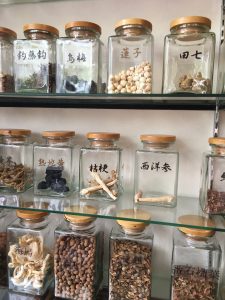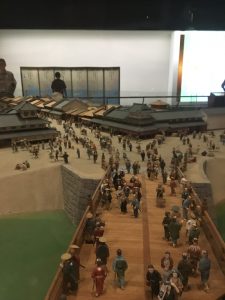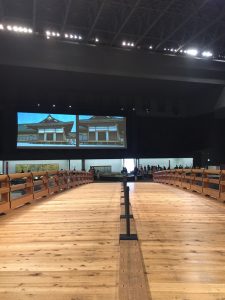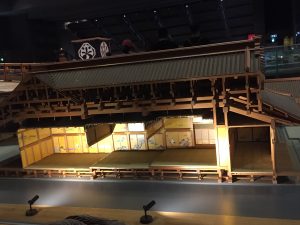This morning we had the incredible opportunity to visit the Soya-Kanpo School and speak with Dr. Qiu about her clinical practice. Kanpo, a traditional medicinal form adopted from China in the 7th century, takes a holistic approach towards treating illness and largely employs herbal medicines in order to do so. Dr. Qiu has been a practicing Kanpo doctor for many years and is very well known throughout Japan. We were only able to meet her thanks to the generosity of Aridome-sensei’s sister, who has interviewed Dr. Qiu many times while writing health-related pieces for magazine publication and kindly offered to introduce us.
Upon arrival, Dr. Qiu welcomed us into the clinic and provided a space for us to sit down. Having only spent time in Western clinics myself, several differences were immediately apparent. The walls were lined with jars of herbs including several varieties of mushrooms, plant roots, and even seahorses. Diminishing some of the skepticism that I initially felt upon seeing these, Dr. Qiu explained that each of the ingredients used in Kanpo is rigorously tested (for heavy metals, purity, radiation, and potentially dangerous microbes) by the Japanese Government’s Ministry of Health, Labour and Welfare. She further added that Kanpo practitioners are typically trained in Western medicine as well, such that knowledge from these two approaches is not only reconciled but actually employed in a complementary fashion. By focusing on the acquisition of knowledge surrounding disease etiology at the molecular level, Western medicine can provide more specific details about the underlying causes of some illnesses. This can bolster Kanpo’s understanding of illness, which considers factors ranging from bodily constitution and age of a patient to the season and other environmental factors in which an illness emerges.
I want to note one compelling example explained by Dr. Qiu in which Kanpo has been able to work more effectively than Western medicinal approaches. Although she provided several compelling examples, I was particularly interested in her description of atopic dermatitis, a condition for which the cause is unknown where dry and scaly patches appear on the skin. While Western medicine has only been able to treat atopic dermatitis with antihistamines, which prevent the itching that arises from swelling and vasodilation characteristic of an allergic reaction, Kanpo has been able to more effectively treat the underlying causes. It has thus been necessarily embraced and supported by the Dermatological Society of Japan. Given that traditional medicinal approaches such as Kanpo are often overlooked as pseudo- or non-scientific, I found it fascinating that they have been forced to embrace it as a more suitable treatment for atopic dermatitis than anything they have been able to provide so far.
Overall, I was deeply moved by our visit to the clinic. Not only did it attenuate my skepticism surrounding Kanpo, but it opened my eyes to another opportunity in which science, East Asian studies, and Japanese language intersect. Having often heard skepticism myself from others at Bowdoin upon hearing that I study these subjects, it was inspiring to see a kind, skilled, and charismatic medical practitioner employing her extensive knowledge surrounding each of them for the sole purpose of improving the health of her patients.





